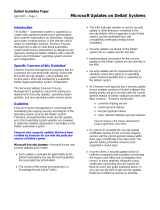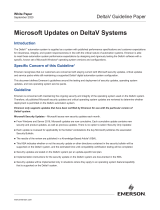
Instruction Manual
D103412X012
DVC6200f Digital Valve Controller
January 2015
1
Contents
Section 1 Introduction and
Specifications 3......................
Installation, Pneumatic and Electrical Connections,
and Initial Configuration 3.....................
Scope of Manual 3..............................
Instrument Description 3........................
Using this Manual 4.............................
Specifications 6................................
Related Information 10..........................
Educational Services 10..........................
Section 2 Wiring Practices 11.............
Quick Connect Cable Entry 11....................
Communication Connections 12..................
Simulate Enable Jumper 13.......................
Section 3 Basic Setup 15.................
Basic Setup 15.................................
Transducer Block Mode 15......................
Protection 15.................................
Device Setup 16...............................
Performance Tuner 20.........................
Section 4 Detailed Setup 21..............
Resource Block 21..............................
Transducer Block 38............................
Analog Output Function Block 89.................
Proportional/Integral/Derivative
Function Block 102...........................
Input Selector Function Block 121.................
Output Splitter Function Block 136................
Analog Input Function Block 147..................
Mulitple Analog Input Function Block 159..........
Discrete Output Function Block 165...............
Discrete Input Function Block 177.................
Section 5 Calibration 189................
Calibration Overview 189........................
Calibration 189.................................
Auto 190.....................................
Manual 190..................................
Relay 191....................................
Supply Pressure Sensor 192.....................
Pressure A or B Sensor 193......................
Section 6 Viewing Device
Variables and Diagnostics 195..........
View Lists 195..................................
Resource Block 195.............................
Device Diagnostics 196.........................
Device Variables 198...........................
Transducer Block 199...........................
Device Diagnostics 200.........................
Device Variables 205...........................
Figure 1‐1. FIELDVUE DVC6200f Digital Valve
Controller
W9713_fieldbus
Section 7 Maintenance and
Troubleshooting 209..................
Replacing the Magnetic Feedback Assembly 210.....
Module Base Maintenance 210....................
Tools Required 210............................
Component Replacement 211...................
Removing the Module Base 211.................
Replacing the Module Base 212..................
Submodule Maintenance 213.....................
I/P Converter 213..............................
Printed Wiring Board (PWB) Assembly 215.........
Pneumatic Relay 216...........................
Gauges, Pipe Plugs or Tire Valves 217.............
Terminal Box 217...............................
Removing the Terminal Box 217.................
Replacing the Terminal Box 218..................
Stroking the Digital Valve Controller Output 218.....
Instrument Troubleshooting 219..................
Section 8 Parts 225.....................
Parts Ordering 225..............................
Parts Kits 225..................................
Parts List 226..................................
Housing 226..................................
Common Parts 226............................
Module Base 227..............................
I/P Converter Assembly 227.....................
Relay 227....................................
Terminal Box 227..............................
PWB Assembly 228............................






















